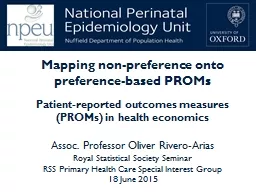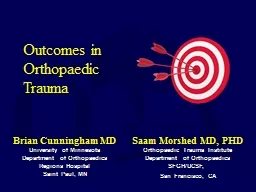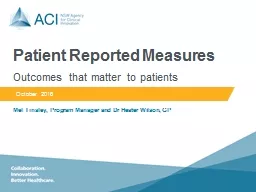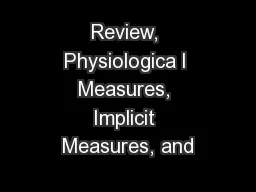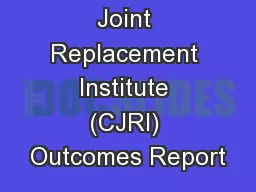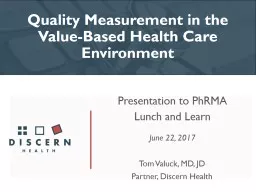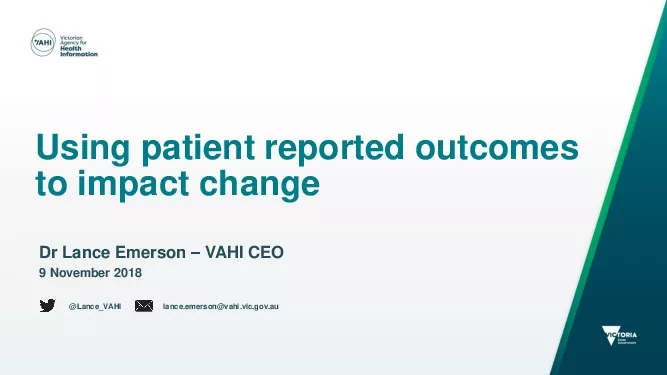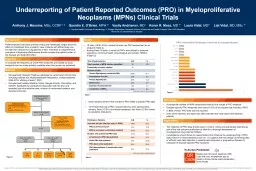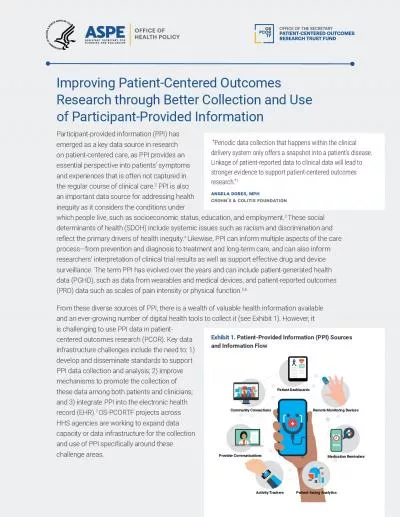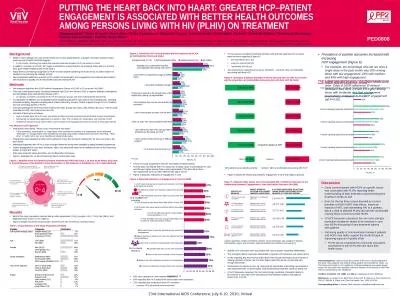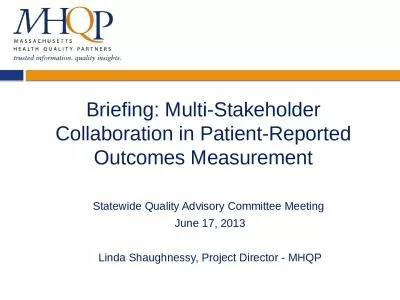PPT-Patient-reported outcomes measures (PROMs) in health
Author : lois-ondreau | Published Date : 2017-03-25
economics Assoc Professor Oliver RiveroArias Royal Statistical Society Seminar RSS Primary Health Care Special Interest Group 18 June 2015 Mapping nonpreference
Presentation Embed Code
Download Presentation
Download Presentation The PPT/PDF document "Patient-reported outcomes measures (PROM..." is the property of its rightful owner. Permission is granted to download and print the materials on this website for personal, non-commercial use only, and to display it on your personal computer provided you do not modify the materials and that you retain all copyright notices contained in the materials. By downloading content from our website, you accept the terms of this agreement.
Patient-reported outcomes measures (PROMs) in health: Transcript
Download Rules Of Document
"Patient-reported outcomes measures (PROMs) in health"The content belongs to its owner. You may download and print it for personal use, without modification, and keep all copyright notices. By downloading, you agree to these terms.
Related Documents

